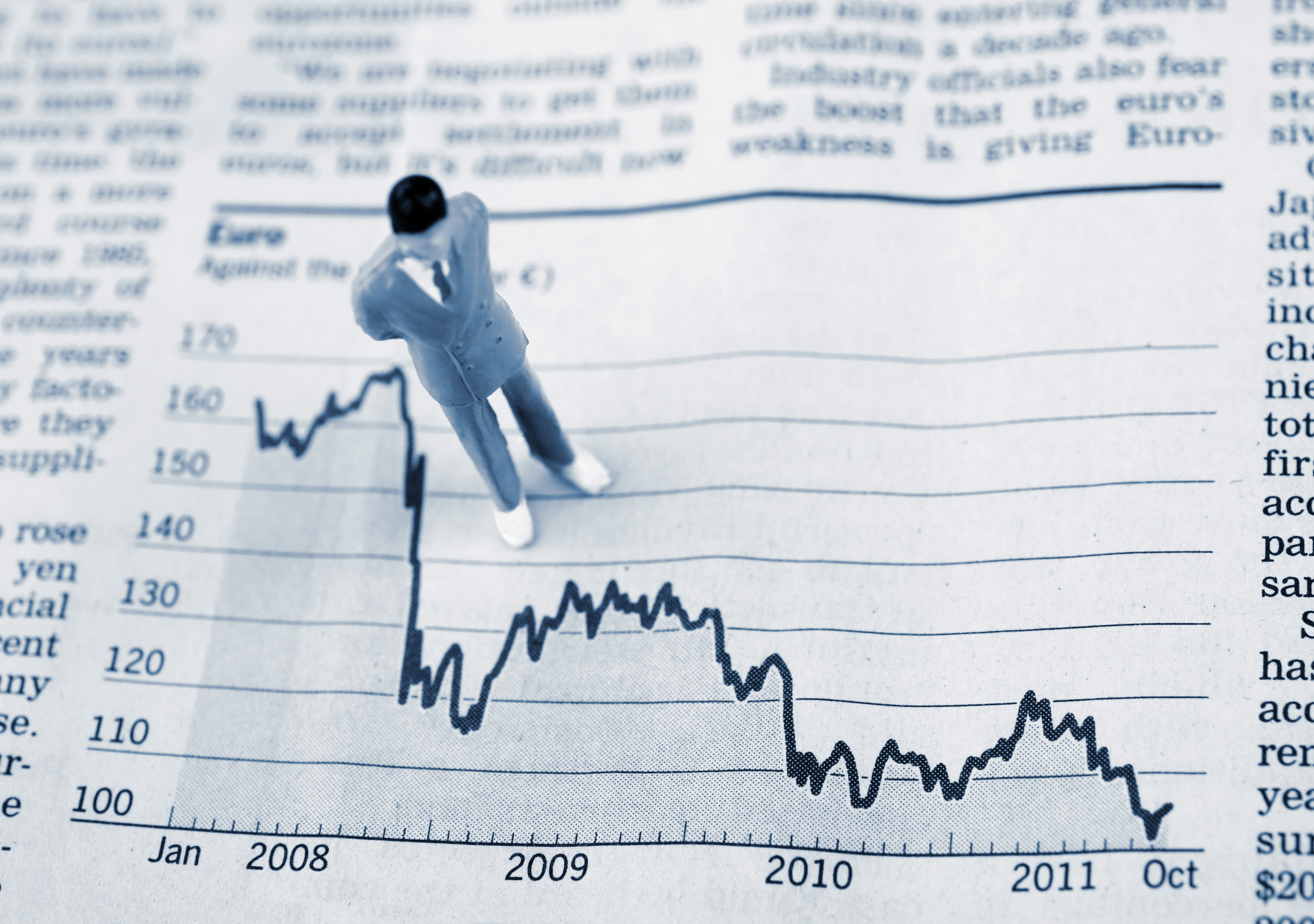With COVID-19 wreaking havoc on the US economy, it is easy to be pessimistic about the future job market. The unemployment rate is in double digits and millions of households are now relying on federal unemployment benefits to survive. Nevertheless, the United States is particularly well-equipped to overcome these changes. Its economy is exceptional, and this is especially true when it comes to the US workforce.
What makes the American labor market so different from other developed nations, and what do we need to ensure it continues to provide opportunities for all?
Part 1: Is the US labor market really so different?
When you focus on the US economy, the problems are evident. Poverty has not been eradicated. Income inequality seems to be growing. In certain metropolitan areas, homelessness is on the rise. In short, it is no utopia. But if we compare the US to other countries, we discover a healthy dynamism to the American economy that is missing from other developed nations. And this is particularly true when we look at work opportunities.
In his essay on America’s exceptional economy, economist Ed Lazear notes that the US offers unrivaled opportunities to work. Lazear notes:
What about job security? The unemployment rate is one measure of job security. Over the last thirty years, unemployment rates in the United States, on average, have been lower than just about every comparable country in the world.
 The Exceptional Economy |
Even more remarkable, the US unemployment rate is lower despite having much higher job mobility than other developed nations. In an essay for the Hoover Institution’s Human Prosperity Project, economist Lee Ohanian examines the country’s job mobility rates:
The rapid reallocation of labor is particularly striking in the United States. About 4 percent of US employment turns over every month as workers leave existing positions and move to new positions. With a current employment level of about 152 million workers, this means the equivalent of about 75 million job changes in the United States each year. This remarkable level of job reallocation highlights a rapidly evolving and growing economy in which the labor market quickly moves workers from slower growing firms and industries to more rapidly growing firms and industries.
 The Effect Of Economic Freedom On Labor Market Efficiency And Performance |
And the dynamism of the US labor market provides far more opportunities for young workers than its counterparts in most of Europe:
The efficient operation of the US labor market in absorbing new workers has been the exception more than the rule when compared to other developed countries. Today, several major economies with far fewer young workers than the United States, such as France, Italy, and Spain, currently have youth unemployment rates of at least 20 percent, even ten years after the global financial crisis. This compares to a youth unemployment rate of about 8 percent in the United States.
And it is more than just statistics. Lazear points to the revealed preferences of millions of would-be immigrants who are eager to live and work in the United States:
The best indicator of whether we are exceptional is the market test. Are people buying our products? Do people want to come here? There are four times as many people in the queue for a green card as are actually issued one in any given year. We are the team everybody wants to play for. A survey of Europeans asked in which country respondents would prefer to work. The largest number chose the United States. We do not see Russia or China on that list. We remain the choice destination. People are putting their money where their mouths are, and this tells us that the United States is exceptional.
Lazear mentions several other unique features of the US labor market. For example, Americans are far more likely to relocate than those in the European Union, and the United States is the only country where unemployment rates are actually lower for the foreign-born population than for those born in the country. Watch this video to learn about other unique characteristics of the US labor market:
The economic dynamism reflected in the nation’s immigration rates, its high mobility rates, and its high incomes beg the question: Why?
Part 2: What makes the US labor market so special?
The US labor market looks different from just about every nation in the world. As we’ve mentioned, unemployment rates are low and job mobility rates are higher. But the differences don’t stop there. Americans tend to work more than Europeans. Ohanian has documented that since the 1950s, hours worked in the US per adult have remained steady, while they have dropped dramatically in most European countries.
What changed since the 1950s? Ohanian points to changes in tax rates and labor market regulation. This video on European and US labor markets highlights his work:
In Europe, labor taxes have risen dramatically over the last half century. Since workers keep less of what they earn, higher labor taxes reduce the incentive to work. Meanwhile, labor taxes in the United States have risen only slightly since the 1950s.
Then there are labor market regulations. Many labor regulations are intended to protect workers, but instead they often they raise the cost of hiring workers. For example, in much of Europe there are stringent rules employers must follow before they may fire or lay off workers. While written with the best of intentions, these rules discourage employers from hiring new workers. Lazear highlights just how burdensome these rules can be:
In Spain, for instance, employers have to give a laid-off employee six months of pay if they are laid off after ten years of service. In Italy, it’s about $2,000 for three years of service. As a reaction to that, firms in these countries have lowered their hiring rates dramatically. If a company fears that it cannot lay off a worker, it is less likely to hire in the first place.
The rules don’t stop there. European minimum wages are much higher relative to the average worker’s productivity. As a consequence, many low-skilled workers can’t get a job, because businesses are not willing to spend more on their wages than the workers actually produce. These high minimum wages are one reason that youth unemployment in Europe is so much higher relative to the US.
The weak employment rates in Europe do more than just rob individuals of job opportunities. They have a profound effect on the overall economy. As we explained in the above video: “Several economists have concluded that the large drop in the amount of work in Europe has also substantially reduced their consumer spending and business investment, which in turn has significantly reduced their prosperity.”
Part 3: But haven’t Americans' wages stagnated?
Job opportunities may be plentiful, but critics of the US economy point to official government statistics that show that most Americans haven’t seen much increase in their incomes over the last three decades. In reality, however, most Americans are doing far better than prior generations.
In The Number Games series, economist Russ Roberts examines income statistics for the middle class and concludes that they are doing better than the numbers might suggest. Roberts notes that official statistics often overstate that rate of inflation and therefore understate income gains made by the middle class:
In addition, changes in household structure make it difficult to compare incomes over time. When one appropriately accounts for demography and changes to household composition, we see that contrary to nearly everything one hears in the media, the middle class is actually doing much better than it was 30 years ago:
You can also see the economic improvements by looking at the incomes of parents and their children. Ed Lazear has found that economic mobility across generations remains strong in the US:
Ninety-three percent of children in the lowest quintile—that is, the people whose parents were in the bottom 20 percent—do better than their parents. That is not so surprising. It is easier to rise to the top when starting from the bottom. But even among the top 20 percent, 70 percent of children do better than their parents.
Part 4: How can we improve labor markets in the United States?
Even before the 2020 pandemic, the US labor market wasn’t perfect. Specifically, there are many laws and regulations that reduce opportunities for millions of American workers.
Occupational licensing, for example, adds burdensome rules that limit entry into certain professions. As we explain in the video below, licensing rules claim to protect consumers, but more often they are created to protect current workers from competition:
Even policies that aren’t directly related to working can have huge implications for the labor market. In the US, many state and local governments have created complex land-use rules that prevent the construction of more homes. These rules benefit current landowners, but they cause regions with booming economies to face large housing shortages. Ultimately, this distorts labor markets because workers who would otherwise seek better jobs in booming markets opt not to go since they can’t find housing. In this video, Lee Ohanian discusses the consequences of housing shortages and proposes several reforms to increase the housing stock:
The list of regulations that reduce employment is almost endless. We cover more of them in our Policy Insight, “Fixing the Way We Regulate.” As explained then, regulatory reform will increase economic growth, encourage businesses to expand, and ultimately expand opportunities for workers.
|
via PolicyEd From state and local policies on housing and labor rules to federal environment and banking laws, misguided regulations can hurt the economy, reduce opportunities for workers, and limit choices for consumers.
|
Beyond fixing the way we regulate, the workforce must be better educated to participate in the 21st century labor market. Unfortunately, the US education system is in dire need of reform. In the video below, Macke Raymond, the founder and director of the Center for Research on Education Outcomes (CREDO) at Stanford University, explains how we can improve the US education system and ensure US workers remain productive and prosperous in the decades to come:
Part 5: Conclusion
The 2020 pandemic has drastically altered the world’s labor market. The consequences are likely to be long and severe. Fortunately, the US labor market has proven resilient to challenges in the past and is well positioned to respond well in the future. While other nations have experienced stagnate labor markets for decades, the dynamic US economy continues to offer many work opportunities. But to provide good prospects for future generations, policy makers must avoid enacting burdensome labor regulations and taxes that have weakened labor markets in other developed nations. Beyond avoiding new harmful policies, policymakers can further improve the labor market by fixing the way we regulate and expanding education opportunities for all Americans.
Sources Cited and Additional Reading
Economist Ed Lazear examines America’s exceptional economy in this PolicyEd video series.
Some argue that the US labor market would be stronger if we put restrictions on trade or immigration. We address these issues in our Policy Insights on trade and immigration. We explain how trade and immigration tend to make the nation wealthier and increase opportunities for most Americans.
In our early Policy Insight on taxes, we explained how high marginal tax rates discourage work. Further, high rates on business and owners of capital limit investment, which ultimately means lower wages and fewer opportunities for workers.
To view the original article, click here.
















